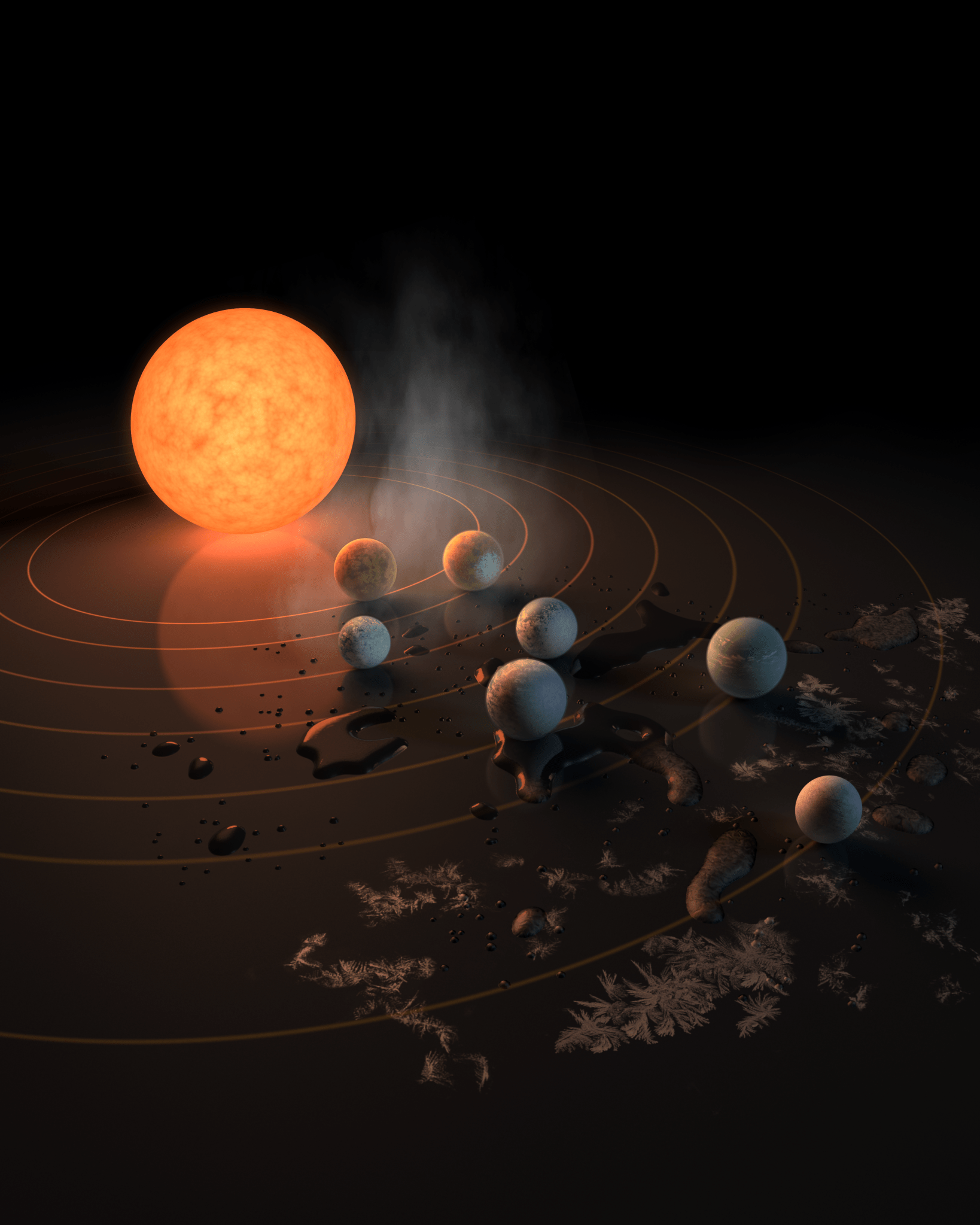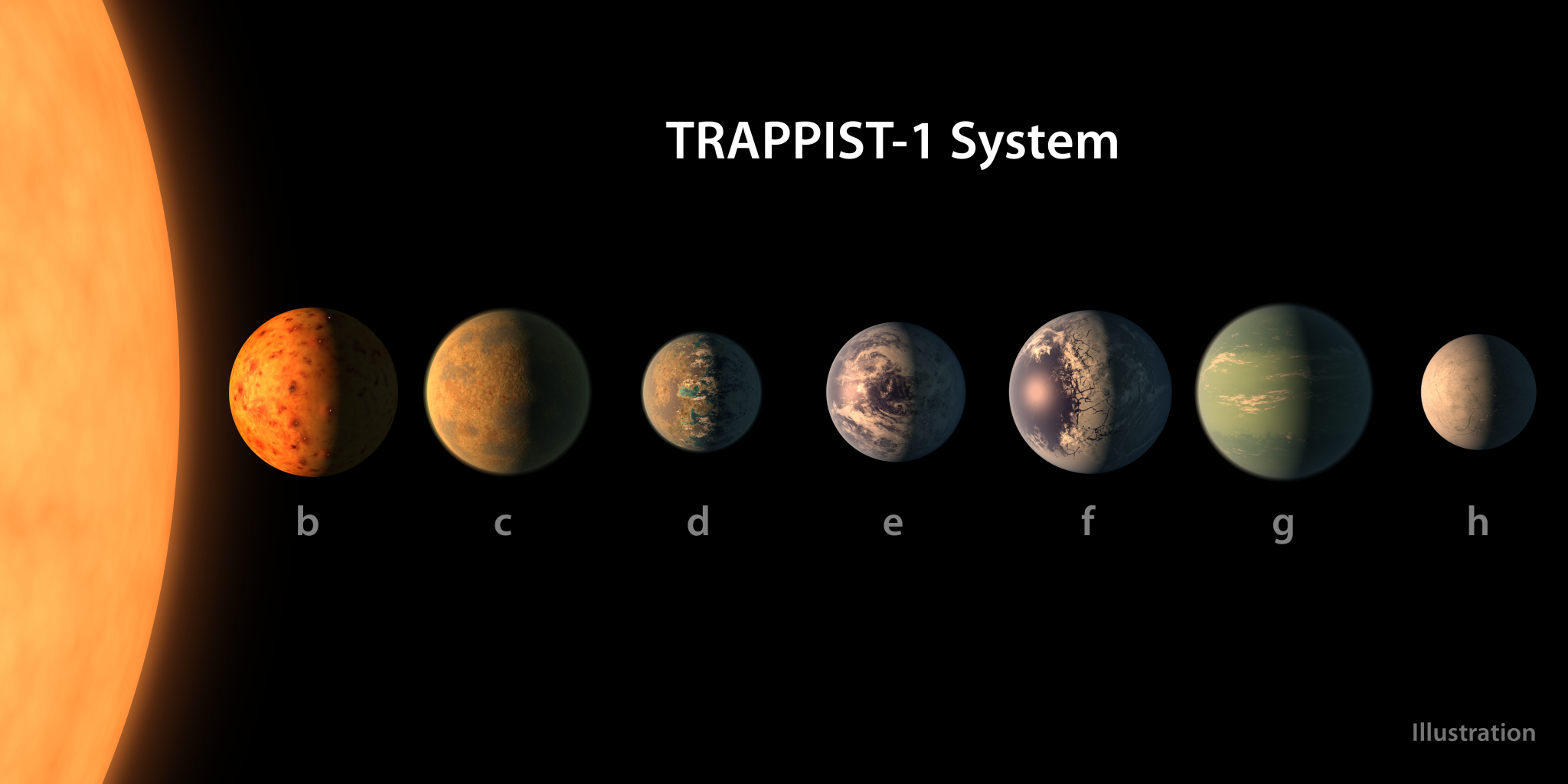Key Takeaways:
- NASA’s Spitzer Space Telescope has identified a system of seven Earth-sized planets orbiting a single star, named TRAPPIST-1.
- Three of these planets are situated in the habitable zone, making them prime candidates for the presence of liquid water and potential life.
- TRAPPIST-1, an ultra-cool dwarf star, is located approximately 40 light-years away in the constellation Aquarius.
- The discovery marks a groundbreaking achievement, setting a record for the highest number of habitable-zone planets found around a single star beyond our solar system.
- The TRAPPIST-1 system offers a unique opportunity for studying Earth-sized exoplanets and their atmospheres, contributing significantly to the quest for habitable environments.
In a remarkable astronomical breakthrough, NASA’s Spitzer Space Telescope has unveiled an extraordinary system of seven Earth-sized planets orbiting a single star, constituting the largest cluster of such planets found in habitable zones beyond our solar system. This groundbreaking discovery, named the TRAPPIST-1 system, not only sets a new record for the highest number of habitable-zone planets around a single star but also opens new avenues for investigating potential life-supporting environments.

Situated approximately 40 light-years away in the constellation Aquarius, TRAPPIST-1’s significance lies in the fact that three of its planets inhabit the habitable zone. The habitable zone is a region around the parent star where conditions are suitable for liquid water, a crucial ingredient for life as we understand it. This revelation intensifies the quest for answering the age-old question of whether we are alone in the universe.
The TRAPPIST-1 system was initially brought to attention when researchers, using the Transiting Planets and Planetesimals Small Telescope (TRAPPIST) in Chile, discovered three planets. Subsequent observations by NASA’s Spitzer Space Telescope, along with ground-based telescopes, confirmed the existence of two planets and unveiled an additional five, bringing the total count to seven. This finding was presented in a paper published in the journal Nature and disclosed at a news briefing held at NASA Headquarters in Washington.
Utilizing Spitzer’s data, scientists not only precisely measured the sizes of the seven planets but also provided initial estimates of the masses of six of them, allowing for density calculations. The density analysis suggests that all TRAPPIST-1 planets are likely rocky, raising further questions about the potential presence of water and the habitability of their surfaces.
Unlike our sun, TRAPPIST-1 is classified as an ultra-cool dwarf star, making it cooler than our sun. This characteristic allows for the possibility of liquid water on planets orbiting closely to it, even closer than Mercury is to our sun. Intriguingly, all seven planetary orbits in the TRAPPIST-1 system are closer to their host star than Mercury is to ours, forming a closely-knit celestial arrangement.
The potential uniqueness of TRAPPIST-1’s planetary system extends to the possibility of tidal locking, where one side of each planet perpetually faces the star. This could result in extreme weather patterns, such as strong winds blowing from the day side to the night side and drastic temperature fluctuations.

Spitzer’s crucial role in this discovery stems from its ability to observe in the infrared spectrum, making it ideal for studying TRAPPIST-1, which glows brightest in infrared light. Observations carried out over 500 hours provided valuable insights into the complex architecture of the planetary system.
The excitement surrounding this revelation is not limited to Spitzer’s findings. NASA’s Hubble Space Telescope has initiated the screening of four planets in the TRAPPIST-1 system, specifically focusing on those within the habitable zone. The aim is to assess the presence of hydrogen-dominated atmospheres, typical for gaseous worlds, around these planets. Early observations of the innermost planets have hinted at rocky compositions, enhancing the prospects for habitability.
Looking ahead, the TRAPPIST-1 system offers a unique opportunity for extensive study, with NASA’s Kepler space telescope and the James Webb Space Telescope set to contribute valuable data. The James Webb Space Telescope is expected to provide enhanced sensitivity for detecting atmospheric components such as water, methane, oxygen, and ozone, further unraveling the mysteries of these distant Earth-sized planets.
In conclusion, the TRAPPIST-1 discovery stands as a pivotal moment in the exploration of exoplanets, offering a promising path toward understanding habitable environments and the potential for life beyond our solar system. As humanity continues to gaze at the stars, the answers to the age-old question of extraterrestrial life may be within reach, thanks to the fascinating TRAPPIST-1 system.


